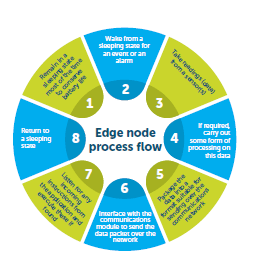Microcontroller manufacturers offer hardware development platforms for their devices. These electronic boards allow engineers to quickly develop firmware for their products without first having to develop any hardware. They also provide a good example of the hardware required to support the device. This can help the hardware engineer when it comes to designing a custom board. Vendors will often provide source schematics and PCB layout files (Altium, OrCad, Eagle) to aid the development of custom/bespoke hardware and shorten time to market.
For devices designed with IoT in mind, their development platforms will often include various sensors integrated directly on to the board, as manufacturers expect most engineers will use their device to integrate with sensors.

